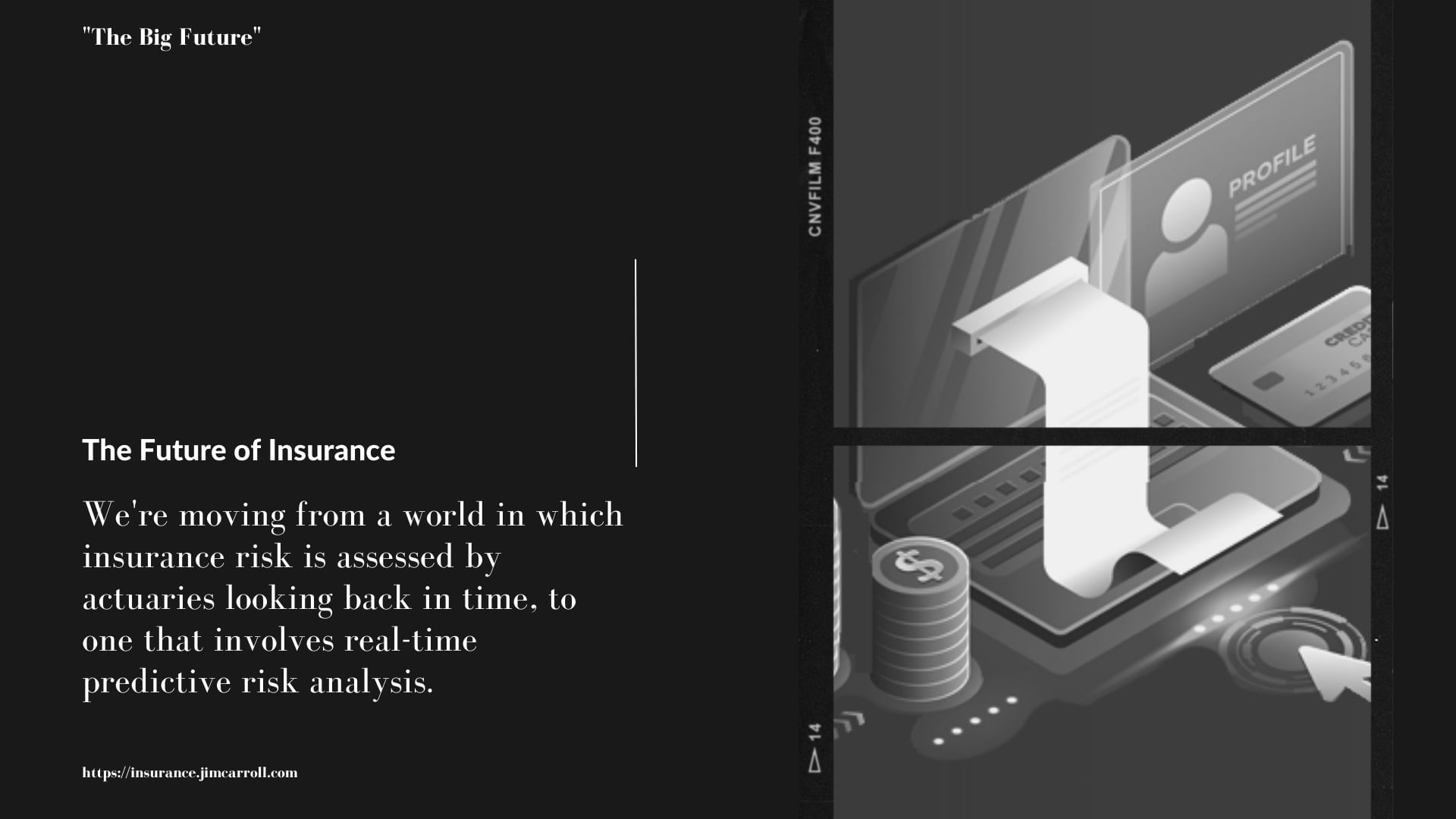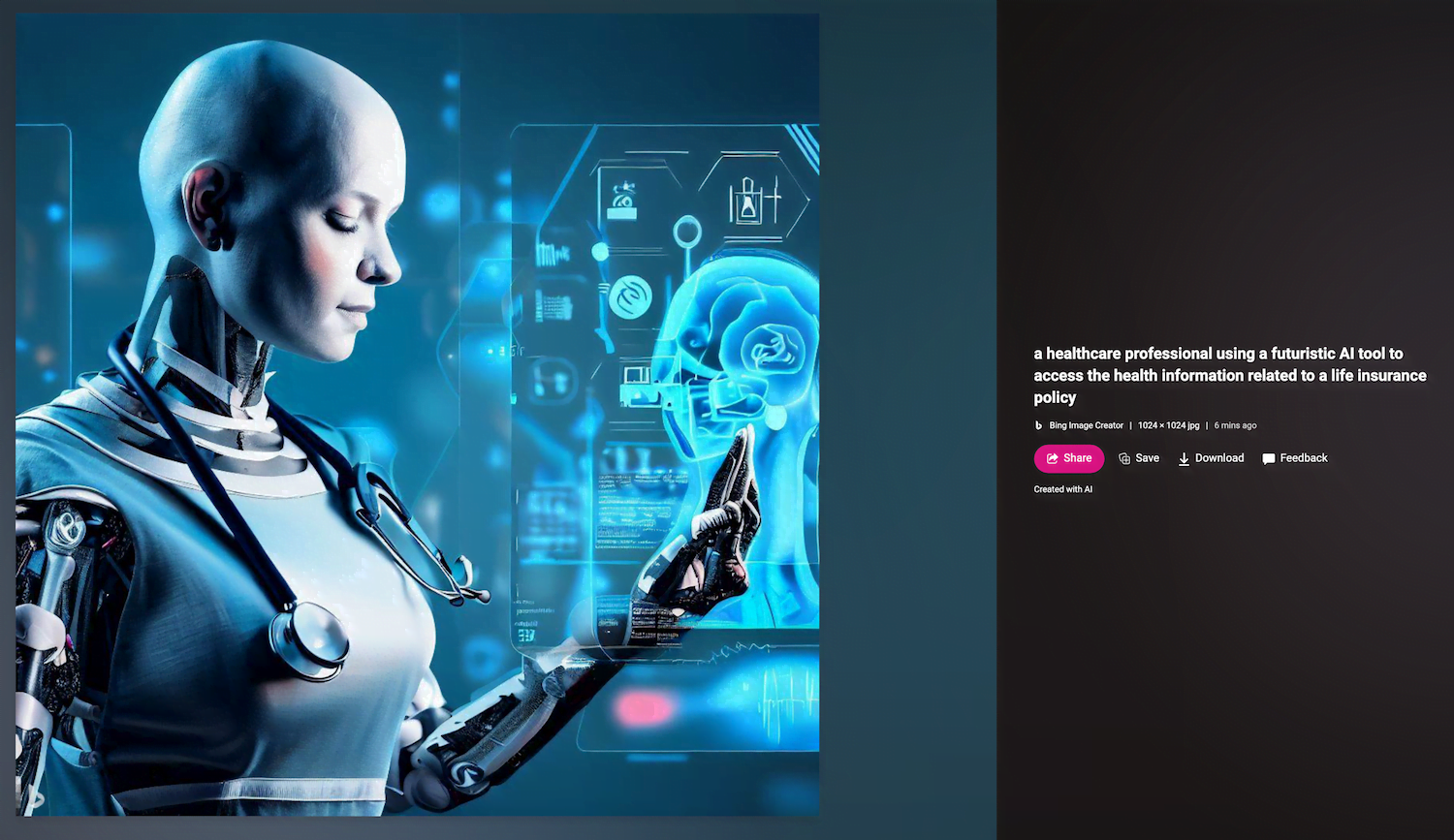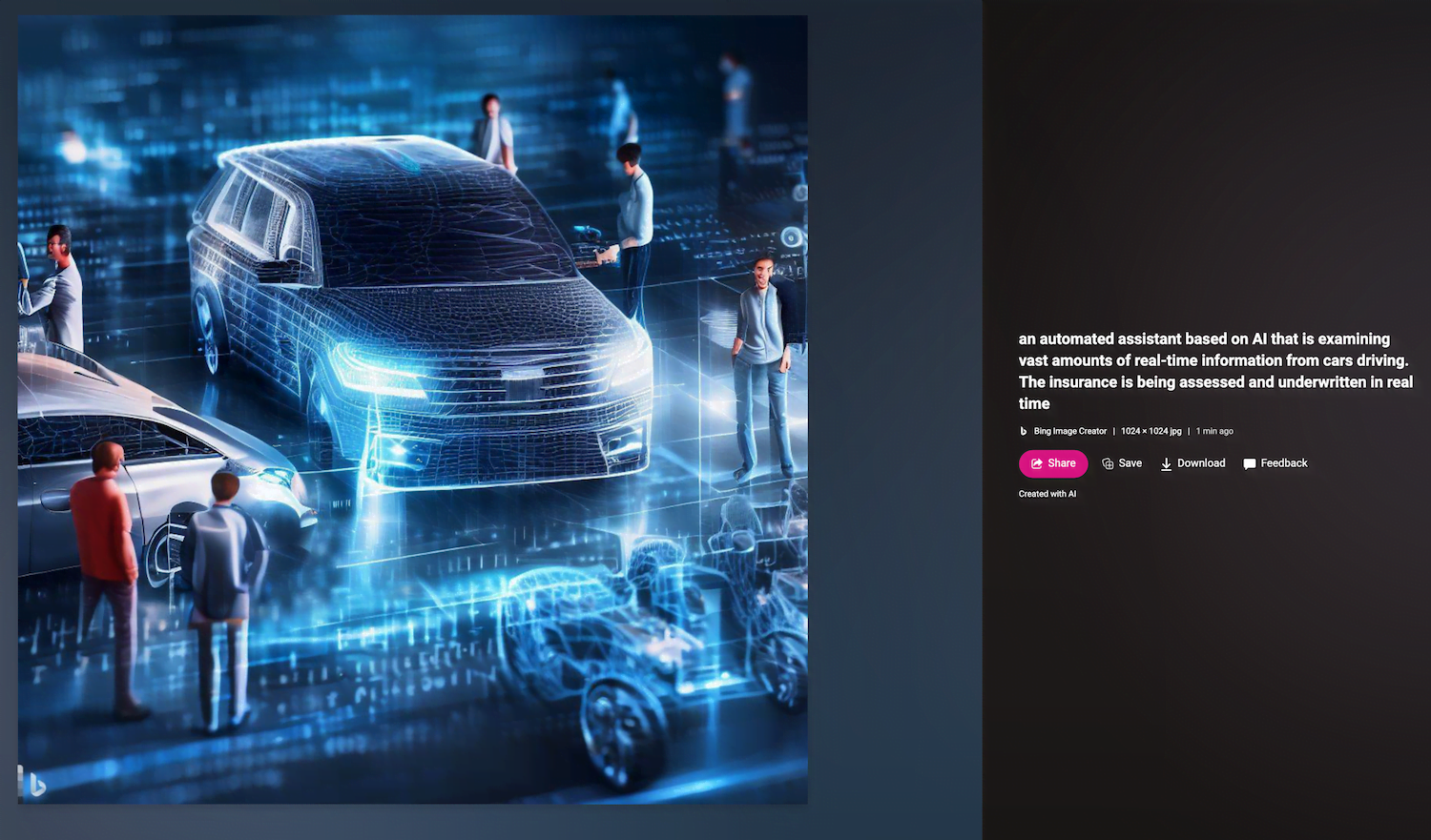The world of insurance is being transformed at a pace that defines new opportunities, presents new challenges, and turns the established order upside down. It also challenges every assumption the industry has ever known. The arrival of accelerated AI – already in prevalent use throughout the industry – will only accelerate trends that were already underway, but at a faster pace that is staggering.
The background? The insurance industry was already being rapidly disrupted by tech companies. Existing brokerage and distribution networks are being challenged as more people buy insurance directly online. Predictive analytics is shifting the industry away from actuarial-based historical assessment to real-time coverage. Policy niches, micro-insurance, and just-in-time insurance are driving an increasing number of new revenue models. The Internet of Things (IoT) and massive connectivity are providing for massive market and business model disruption as real-time device reporting provides for instant risk assessment – which allows for lower-cost underwriting. Fast-paced trends involving self-driving cars, the sharing economy, personal drones, swarm-bots, smart dust, artificial intelligence, and augmented reality will either mitigate, accelerate or challenge the very notion of risk assessment and underwriting! What happens when Amazon, Google, or some kid in a garage decides to really change the insurance business model? And then there is the element of risk itself – at a recent global insurance risk summit in Switzerland, I outlined the dramatic new forms of accelerated risk that the industry must now confront (including, obviously the heightened risk of AI itself!)

The bottom line is this: what seemed to be science fiction just a few short years ago has become a reality today, as time compresses and the future accelerates within the insurance industry. Whichever way you look, all sectors of the insurance industry are set for an era of disruption, challenge, and change! Is the industry ready for transformative change? Not really! A recent survey indicated that while 94% of Chief Strategy Officers at insurance companies agree that tech will “rapidly change their industry in 5 years,” fewer than 1 in 5 CSOs believe their companies are prepared. Does the insurance industry have the innovation culture necessary to deal with the potential for what comes next?
Maybe not – and this survey was done before the massive acceleration of AI that began to occur early in 2023.
What is the impact of AI on the industry? To get a sense of that, consider the major trend driving every single aspect of the industry going forward – we’re moving from a world in which insurance risk is assessed by actuaries looking back in time, to one that involves real-time or forward-oriented predictive risk analysis. That’s a substantial, significant change, and AI helps to take us there.

Understanding the trend
Before digging into AI, let’s take apart the future that was already underway in insurance.
We are quickly moving into an era of “performance-oriented insurance” with policies and pricing based on performance. If you live up to or exceed some performance standard, you’ll get a rebate or reduction on your insurance policy rate. It’s already underway in the field of automotive insurance as a flood of GPS-enabled performance-measuring devices come to inhabit most automobiles throughout the industrialized world. Insurance companies will set a policy price, and then give you a rebate if you exhibit better-than-average driving behavior. Not only that, but Tesla is offering this insurance directly through the technology embedded in the car; others will in the future as well.
The same type of thing is starting to occur in the world of life insurance. It has long been the assumption that despite the rapid emergence of genomic, preventative medicine, it would never be desirable, ethical, or even fair to underwrite policies based on a DNA test. Yet this might be a pretty big assumption to make. History shows that assumptions that underlie a business model barely last. Clearly, we know that there are some powerful trends at work:
- the cost for a DNA test that can be used to predict with a high degree of accuracy the diseases and conditions you will inherit in your lifetime is set to collapse, as Moore’s law comes to drive the cost of DNA sequencing machines that do the test
- hence, greater numbers of people will have the opportunity to gain such insight (whether it be good or bad)
- those who have a test that shows a life that will be relatively disease and condition free would likely be able to offer themselves up to a group of specialty insurers and get a policy discount compared to the average population
Again, there’s an opportunity for big business model change and upheaval as this happens. So too is the concept of a rebate of your life, medical or disability insurance, if you can prove that you are taking regular, active steps to ensure that you are in good health. Certainly, there are those in the health care system, who know that with the massive challenges in front of, the system, a lot of big, bold transformative thinking is necessary. AI will be used to assess this data.

Some insurers – notably, John Hancock – are already doing this. Extend this type of thinking into what comes next in our hyperconnected world — individuals who monitor their blood pressure, glucose levels, and other vitals that they are willing to share with their insurer. Exercise and wellness apps on their iPhones that they can use to demonstrate their commitment to a regular series of workouts. Adherence to a personalized lifestyle plan — with insurance cost reductions based on performance.
The bottom line is that in the next several years, at a very fast pace, the world of insurance will continue to be challenged through innovation involving analytics and predictive modeling, performance-based policies, and a whole series of other opportunities.
Welcome, AI!
Enter AI. The future will belong to those who are fast! Here’s an overview of the role it is already playing and will continue playing going forward. First, considering the shift as described above, here are the trends:
- Risk assessment and risk modeling: AI will help insurance companies assess risks and predict the likelihood of future events, allowing insurance companies to price policies more accurately based on better analysis of discrete data. So much of what we do in insurance involves ‘big data,’ and AI leads us down the path of better analysis of that data. For example, AI algorithms can analyze data on weather patterns, traffic patterns, and crime rates to determine the likelihood of a car accident or break-in within a particular region; can examine healthcare data for patterns of disease, wellness, and other factors; a drone flyover of a building can provide detailed data that can be fed into a digital-twin that could then be used for risk assessment.
- Underwriting and actuarial analysis: AI will help in the entire process of moving insurance away from looking back to asses insurance risk (blood test, urine test) to looking in real-time (blood pressure and other real-time health information) to forward-oriented (DNA-based policies); or in automotive, real-time driving behavior. This is a massive change, and through this, we might be able to use AI can help to automate the underwriting process, reducing the time and resources required to evaluate applicants and price policies. For example, AI algorithms can analyze data on a customer’s age, health, and lifestyle to determine their risk profile and determine the appropriate policy pricing.
- Predictive Analytics: This leads us down the whole path of a trend that has been maturing for years – predictive analytics. AI can help to predict future trends and identify potential opportunities for growth. For example, AI algorithms can analyze data on customer behavior and market trends to identify potential new markets or products, based on analyzing vast amounts of data provided through public records, or the type of information collected above.
- Product Development: AI can help to develop new insurance products and services based on customer needs and preferences. For example, AI algorithms can analyze customer data to identify gaps in coverage or areas where new products are needed.

Beyond that, there are many disruptive opportunities, many of which are already underway, and others that will now accelerate in terms of the scope of the opportunity and the maturity of the possibility.
- Fraud detection: AI can help to detect fraudulent claims by analyzing data patterns and identifying anomalies within the vast amounts of information generated through the insurance industry For example, AI algorithms can detect patterns of behavior that are consistent with insurance fraud, such as claims that are made at unusual times or for unusual amounts, or accounts that display an unusual pattern of claims.
- Claims processing: AI can help to automate claims processing, reducing the time and resources required to review and process claims. For example, AI algorithms can review medical records and other documents to determine whether a claim is valid and should be paid, based on predetermined and identified data constraints.
- Customer retention through policy development: AI can help to retain customers by providing personalized recommendations and offers. For example, AI algorithms can analyze customer data to identify when a policy is about to expire and provide recommendations on renewals or new policies; or it can be used to help to target marketing efforts more effectively by analyzing customer data and identifying the most promising customer segments. For example, AI algorithms can analyze data on customer behavior to identify potential customers who are likely to be interested in a particular product or service based on highly specific criteria.
- Claims management: AI can help to manage claims more effectively by automating the claims process and providing real-time updates to customers. For example, AI algorithms can analyze data on customer behavior to provide real-time updates on the status of a claim.
- Product pricing: AI can help to price insurance products more accurately by analyzing customer data and identifying risk factors according to market stratification. For example, AI algorithms can analyze data on a customer’s age, health, and driving record to determine the appropriate price for an insurance policy.
- Image Analysis: AI can help to analyze images, such as medical images, to identify potential issues or anomalies. For example, AI algorithms can analyze X-rays and MRIs to identify potential areas of concern and provide doctors with more accurate diagnoses.

In essence, the very nature of the insurance industry is that it is a ‘big data industry.
Given that, there has been a lot of AI implementation to date, and now, in the era of AI acceleration, there is a lot more yet to come.




GET IN TOUCH
Jim's Facebook page
You'll find Jim's latest videos on Youtube
Mastodon. What's on Jim's mind? Check his feed!
LinkedIn - reach out to Jim for a professional connection!
Flickr! Get inspired! A massive archive of all of Jim's daily inspirational quotes!
Instagram - the home for Jim's motivational mind!